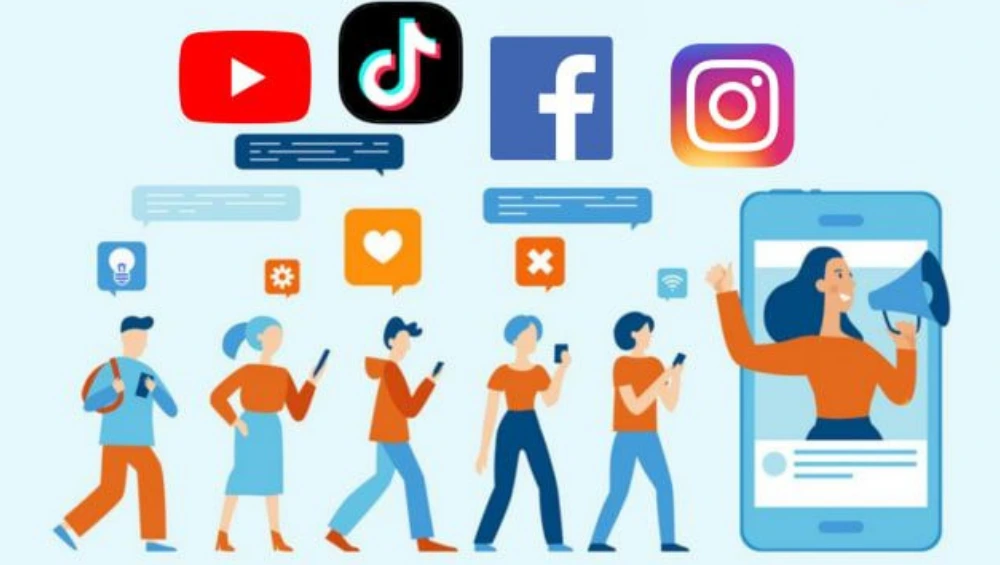The digital age has transformed the way brands communicate with audiences, and at the heart of this transformation lies the evolution of influencer marketing. What began as a tactic involving mega-celebrities promoting products to millions has now evolved into a complex ecosystem of micro-influencers, niche communities, and authentic engagement. The evolution of influencer marketing reflects changing consumer behaviors, increased skepticism toward traditional advertising, and a demand for genuine human connection.
In this article, we’ll explore how influencer marketing has shifted over the years — from red-carpet endorsements to TikTok testimonials — and what this means for brands, creators, and consumers in 2025 and beyond.
The Early Days: Celebrity Endorsements and Mass Appeal
In the early 2000s, influencer marketing wasn’t yet a defined strategy — it was mostly seen in the form of celebrity endorsements. Athletes, movie stars, and musicians lent their fame to promote perfumes, clothing lines, and beverages. These partnerships were often lucrative and reached wide audiences through TV, radio, and print ads.
However, this model was expensive and sometimes lacked authenticity. Consumers started to question whether celebrities genuinely used the products they promoted or were simply being paid millions to say they did. Despite their star power, many campaigns failed to create lasting consumer trust.
This period marked the foundation of the evolution of influencer marketing — a system that would later shift toward relatability over celebrity status.
Rise of the Social Media Influencer
The rise of platforms like YouTube, Instagram, and later TikTok radically altered the landscape. Everyday people began amassing large followings by sharing relatable content — from beauty routines and cooking hacks to travel vlogs and gaming streams.
Unlike traditional celebrities, these creators built influence through consistency, engagement, and relatability. Followers trusted them because they appeared more “real” — they answered comments, shared personal stories, and offered candid reviews.
This shift was a critical point in the evolution of influencer marketing: marketers began to see the value in peer-to-peer recommendations over top-down endorsements.
Micro and Nano Influencers: The Power of Niche
As influencer marketing matured, brands discovered that smaller influencers — those with 1,000 to 100,000 followers — often had higher engagement rates and more loyal audiences than mega-influencers. These micro and nano influencers specialize in niches such as sustainable living, DIY crafts, indie beauty, pet care, and more.
Their audiences are not only more targeted but also more trusting of their recommendations. A nano-influencer sharing their honest opinion on a skincare product can drive more conversions than a celebrity with a million followers posting a polished, sponsored photo.
The evolution of influencer marketing continued to move toward quality over quantity. Brands shifted their focus from sheer reach to relevance, authenticity, and conversion.
The Role of Video Content in Influencer Growth
Video platforms — particularly YouTube and TikTok — played a huge role in accelerating the evolution of influencer marketing. Unlike static images, videos allowed influencers to demonstrate product usage, share personal experiences, and engage audiences in real time.
Live streams, product unboxings, tutorials, and vlogs created deeper connections between creators and their followers. Audiences began to see influencers as trusted friends or peers, rather than distant personalities.
Short-form video, in particular, became an essential tool. TikTok’s algorithm, which favors content quality over follower count, allowed lesser-known creators to go viral overnight — giving rise to a new wave of influencers rooted in authenticity and storytelling.
Brand Partnerships: From Sponsored Posts to Long-Term Collaborations
In the early days, influencer marketing was dominated by one-off sponsored posts. A brand would pay a creator to promote a product, the influencer would post it, and the partnership would end there.
Today, the evolution of influencer marketing has led to deeper, long-term collaborations. Brands now treat influencers as creative partners and often involve them in:
-
Product development (e.g., influencer-created collections)
-
Creative direction for campaigns
-
Ambassador roles with ongoing engagements
-
Affiliate partnerships and profit-sharing
This shift reflects a more strategic approach. By building long-term relationships, brands gain access to an influencer’s loyal community while allowing creators to maintain their credibility and voice.
Authenticity Is the New Currency
Modern audiences crave transparency. They are quick to spot inauthentic endorsements and can call out influencers who seem too scripted or overly commercial. This has forced both brands and creators to be more intentional and honest in their messaging.
The evolution of influencer marketing now emphasizes:
-
Disclosure of paid partnerships
-
Behind-the-scenes content
-
Unfiltered reviews
-
Storytelling over sales pitch
For example, a beauty influencer might now share a detailed “first impression” video about a new foundation — including both pros and cons — rather than simply posting a glowing (but vague) endorsement.
Influencer Marketing in the Age of AI and Analytics
Another major turning point in the evolution of influencer marketing is the integration of advanced analytics, AI, and performance tracking tools. Brands no longer guess whether a campaign is working — they can measure everything from engagement rates and click-throughs to ROI and customer sentiment.
AI tools can now match brands with influencers whose audiences align with specific demographics, interests, and buying behaviors. Meanwhile, influencer platforms help automate outreach, campaign management, and reporting.
This data-driven approach makes influencer marketing more effective, scalable, and accountable — transforming it from a creative experiment into a mainstream marketing pillar.
Influencer Marketing and Social Responsibility
In recent years, the social and ethical role of influencers has become more prominent. Audiences expect influencers to take stands on important issues such as mental health, climate change, diversity, and inclusion.
This shift has influenced the evolution of influencer marketing by encouraging partnerships with values-driven creators who align with a brand’s mission — not just its product goals.
For instance, many eco-conscious brands now collaborate exclusively with influencers who advocate for sustainable living. This alignment not only boosts brand image but also builds genuine trust with like-minded consumers.
Emerging Trends in the Evolution of Influencer Marketing
Looking ahead to 2025 and beyond, several trends are shaping the future of influencer marketing:
1. Virtual Influencers
Computer-generated personalities like Lil Miquela are becoming increasingly popular. These digital influencers are fully controlled by brands, making them predictable and easy to manage — though they raise questions about authenticity.
2. Decentralized Platforms
With growing concerns about algorithmic bias and data privacy, influencers are exploring decentralized platforms like Mastodon or Web3-based social apps to engage audiences more directly.
3. Creator-Led Brands
Many influencers are launching their own product lines or businesses, shifting from being brand promoters to brand builders.
4. Niche Communities
Micro-communities on platforms like Discord or Patreon allow influencers to monetize through subscription content, exclusive access, and community-building.
These trends indicate that the evolution of influencer marketing is far from over — it’s entering a new phase of personalization, ownership, and creativity.
Conclusion
The evolution of influencer marketing has been nothing short of transformative. What started as celebrity-driven promotions has evolved into a powerful marketing ecosystem built on authenticity, storytelling, and connection. In 2025, influencers are not just endorsers — they are entrepreneurs, educators, entertainers, and community leaders.
As consumers continue to seek genuine connections and personalized content, brands must adapt by forming meaningful partnerships with influencers who share their values and understand their audiences. The future of influencer marketing lies in transparency, data, creativity — and above all — trust.
Whether you’re a brand, a creator, or a curious observer, understanding the evolution of influencer marketing is essential for navigating the digital landscape of today and tomorrow.








